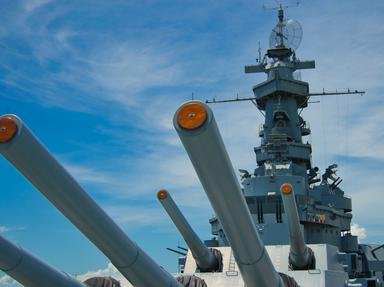Quiz Answer Key and Fun Facts
1. If you were a U. S. Soldier and were told to drive your two and a half ton truck aboard a LSD, what would you drive it on?
2. You are told by your platoon sergeant to climb down the cargo net into the Higgins Boat. What letters designated the Higgins boat?
3. Many troops went ashore in a LVT or Landing Vechile Track. What was the common name for these versatile vehicles?
4. The LCI, or Landing Craft Infantry, could get many troops ashore. What feature did this vessel have to disembark infantry troops?
5. Crew members said LST stood for Large Slow Target. What did LST really stand for?
6. The LCM was a very important craft which could get a lot of equipment and supplies ashore. What would LCM stand for?
7. The LCS was be used for many different roles. What did LCS stand for?
8. The LCT was another great vessel. What does LCT stand for?
9. Some net layers and mine layers were converted into LSVs. What does LSV stand for?
10. The LST was big and slow, so the US Navy needed a smaller, faster ship that could get into tighter beaches in the Pacific theater. They came up with a little brother of the LST called the LSM. What does LSM stand for?
Source: Author
stevroll
This quiz was reviewed by FunTrivia editor
bloomsby before going online.
Any errors found in FunTrivia content are routinely corrected through our feedback system.
